Roofing Revolution 2025: Trends and Costs
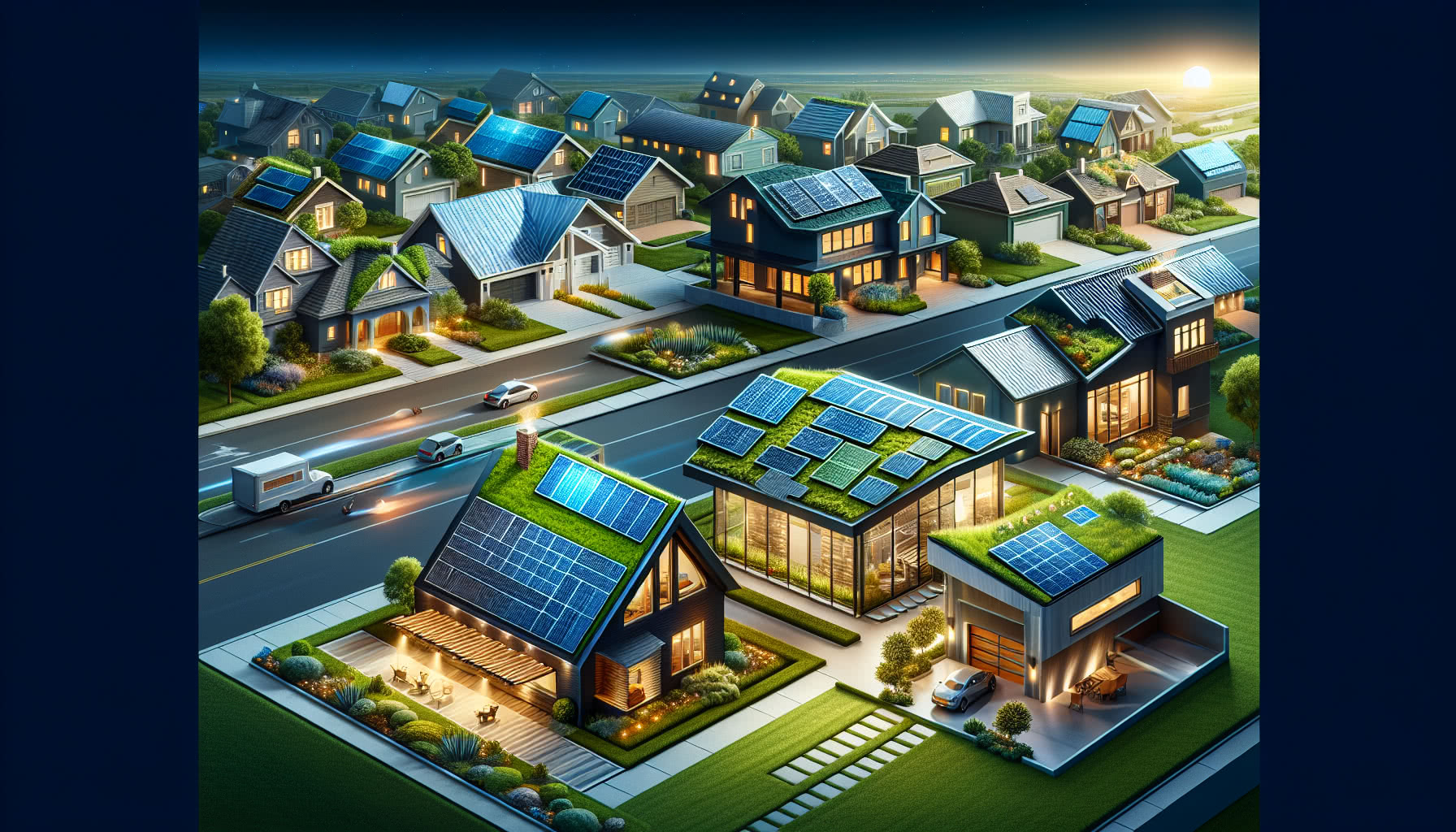
Looking ahead to 2025, roofing is getting a major upgrade! New materials and a focus on being eco-friendly mean homeowners have more fantastic options than ever before. Think stronger asphalt, shingles that generate solar power, and even metal roofs built to last. These aren’t just about looking good; they’re about saving energy and being kinder to the planet.
Choosing a roof can feel overwhelming, but it doesn’t have to be. We’ll break down the jargon, like what a ‘roofing square’ is, and explain how different materials affect your home’s strength. Of course, cost is a big factor. Whether you’re considering a simple, budget-friendly roof or a high-tech one with solar panels, we’ll help you understand the prices and find the best fit for your needs and budget. Remember, labor costs can vary by location, so we’ll factor that in too
Choosing the right roof goes beyond just picking materials; it involves considering the architectural style of the home, local climate conditions, and long-term energy savings. Whether it’s the classic appeal of slate that increases a home’s resale value or the functional benefits of solar shingles that promise to offset energy costs, the decision is significant. Planning for a new roof, therefore, is not just about dealing with the present but preparing for the future. It’s about making informed choices that align with both personal goals and broader environmental impacts, ensuring that the roof over one’s head is built not only for today but for many years to come.
With a focus on trends such as Energy efficiency and sustainability, the roofing industry in 2025 looks set to offer homeowners innovative solutions that marry function with eco-friendliness, setting the stage for a deeper discussion on how roofing materials and trends are reshaping the environments we inhabit.
Roofing Materials and Trends
As the roofing revolution marches forward in 2025, the focus sharpens on the latest materials and trends that promise to redefine our shelters. Emerging materials like advanced asphalt composites and next-gen metal alloys are setting new benchmarks for durability and sustainability. The drive towards greener choices is evident with the surge in popularity of solar-integrated shingles and green roofs, which cater not just to aesthetic preferences but also to urgent environmental realities. These innovations are complemented by lightweight, recyclable composites that offer both efficiency and reduced environmental impact, aligning with the growing consumer demand for eco-friendly building options.
The consideration of material weight, style, installation complexity, and energy efficiency becomes crucial in selecting the appropriate roofing. Each material offers distinct advantages and challenges, necessitating a deeper understanding of their long-term benefits and maintenance requirements. As 2025 approaches, the importance of aligning roofing choices with both architectural styles and climate needs cannot be overstated, ensuring that each home is as functional as it is visually appealing.
The subsequent sections will get deeper into the specifics of roofing terminology, the cost implications of new roofs, and strategic planning
Advanced asphalt composites, sustainable wood options, next-gen metal alloys, clay, slate, concrete tiles, and solar-integrated shingles.
As the roofing industry evolves, a diverse array of materials emerges, each with unique benefits tailored to modern demands. Advanced asphalt composites now feature enhanced durability and improved thermal properties, making them a superb choice for regions experiencing extreme weather fluctuations. These composites are often selected for their balance of cost-efficiency and longevity, with some now designed to reflect solar heat, reducing cooling costs significantly.
Sustainable wood options such as treated cedar and redwood continue to be popular for their natural aesthetics and environmental benefits. These woods are harvested from responsibly managed forests, ensuring minimal environmental impact, and are treated to increase resistance to fire and pests, thereby extending their functional lifespan.
Next-gen metal alloys are revolutionizing the metal roofing sector. These materials are not only lighter and stronger but also feature advanced coatings that enhance their reflective capabilities, which significantly cuts down on energy costs by keeping buildings cooler.
For those preferring traditional aesthetics, clay, slate, and concrete tiles remain unmatched. Clay tiles are cherished for their classic beauty and longevity, especially in warmer climates, while slate offers a sophisticated look with an incredibly long lifespan, often over a century. Concrete tiles provide a middle ground with good durability at a more affordable price point than slate.
Lastly, solar-integrated shingles represent the cutting edge of roofing technology. These shingles seamlessly blend into traditional roofing while harnessing solar energy to
Roof Decisions Made Easy: Key Factors to Weigh
When selecting roofing materials for 2025, several critical factors must be weighed to ensure both functionality and aesthetic appeal. Style preferences can greatly influence the choice, with materials like slate and clay tiles offering a classic look that enhances curb appeal, while metal and solar shingles provide a more modern flair. Cost is always a consideration; for instance, asphalt shingles remain a budget-friendly option, whereas solar shingles represent a higher upfront investment but can lead to significant energy cost savings over time.
Sustainability and energy efficiency are increasingly paramount. Materials like recycled metal roofs and solar shingles not only reduce environmental impact but also offer energy savings by enhancing heat reflection and providing renewable energy generation, respectively. The complexity of installation can vary significantly—a traditional asphalt roof might be straightforward and quick to install, whereas a roof integrated with solar shingles requires more specialized skills and time, impacting labor costs.
Material weight also plays a crucial role, particularly in areas prone to severe weather or where structural limitations exist. Lightweight materials such as metal or advanced composites are favored for their ease of handling and reduced stress on building structures, unlike heavier options like slate or clay tiles which may necessitate additional structural support.
Each of these factors must be carefully balanced to choose the most suitable roofing material that meets both the aesthetic desires and practical requirements of a building in 2025.
2025 Roofing Trends: The Rise of Eco-Roofs: Solar, Green, and Recycled Options
As 2025 approaches, the roofing industry is witnessing a significant surge in the adoption of solar shingles and green roofs, primarily driven by rising energy costs and a strong wave of eco-conscious consumer behavior. Solar shingles are increasingly popular due to their dual functionality as both a roofing material and an energy producer. These innovative shingles seamlessly integrate into traditional roofing systems, providing a sleek appearance while generating electricity. This helps homeowners significantly reduce their energy bills while also increasing the value of their homes.
Simultaneously, green roofs are gaining momentum, particularly in urban settings where environmental impact reduction and urban heat island mitigation are crucial. These living roofs support plant life, which not only enhances building insulation but also improves air quality and biodiversity. Green roofs are particularly appealing for their ability to manage stormwater runoff, reducing the burden on urban sewer systems during heavy rains.
Lightweight, recyclable composites are also on the rise, marking a shift towards more sustainable roofing solutions. These materials are not only easier to transport and install but also contribute to the reduction of construction waste, as they can be fully recycled at the end of their lifespan. The traction of these composites reflects a broader industry move towards materials that offer longevity and sustainability without compromising on performance and aesthetic appeal.
These trends collectively underscore a pivotal shift in roofing practices, aligning closely with broader environmental goals and
Roofing Terminology
As the roofing landscape evolves with the introduction of innovative materials and sustainable practices, it’s essential to grasp the specific terminology that defines this sector. Understanding these terms not only enhances communication with professionals but also aids in making informed decisions about roofing options. This section studies into the unique jargon of the roofing industry, providing clarity on terms such as “flashing,” “underlayment,” and “soffit,” each critical for comprehending the complexities of roofing systems. Additionally, the concept of “roofing squares,” a unit crucial for measuring and planning purposes, has seen adjustments. Innovations in design and material efficiency now allow a more precise estimation of required materials, ensuring cost-effectiveness and reducing waste. This exploration of roofing terminology serves as a foundation for the subsequent detailed discussions on costs, material choices, and strategic planning for a new roof, seamlessly connecting to the broader themes of the 2025 roofing revolution.
Roofs are measured in squares (1 square = 100 square feet).
Roofing projects are often quantified in what industry professionals refer to as “squares.” One square in roofing terms equates to 100 square feet of roof surface. This standardized measurement simplifies the estimation and comparison of roofing materials across different types and sizes of projects. For instance, when considering the roofing needs of a typical 2,000-square-foot home with a gable roof, calculations now typically result in the requirement for about 14 to 15 squares. This accounts for not only the area covered but also additional material necessary for overlap, ensuring complete coverage and protection.
The use of squares is particularly beneficial when working with the diverse range of materials available in 2025, from traditional options like clay and slate to innovative choices like solar shingles and next-gen metal alloys. It allows for straightforward calculation regardless of material weight or installation complexity, which varies significantly among options. For example, while lightweight asphalt shingles might cover more area with less physical material, heavier slate tiles might demand more structural support, influencing the overall square calculation for complete roof coverage. This uniform measure helps streamline planning and cost estimation, aligning with the strategic roofing frameworks that prioritize efficiency and sustainability in modern construction practices.
What are the anticipated cost implications for homeowners with the introduction of new roofing materials in 2025?
With the arrival of innovative roofing materials in 2025, homeowners can anticipate a shift in cost dynamics. Initially, these advanced materials, such as solar tiles and green roofs, might come with a higher upfront cost compared to traditional roofing options. However, the long-term savings are significant due to their energy-efficient properties and durability. These materials are designed to reduce energy costs and provide better insulation, ultimately leading to a decrease in utility bills. Moreover, their enhanced lifespan minimizes the frequency of roof replacements, providing a cost-effective solution over time.
Example: 2,000 Sq Ft Home Roofing: Material Usage Explained
In the evolving world of roofing, the example of a 2,000-square-foot home with a gable roof now typically requiring only 14-15 squares illustrates a significant shift toward efficiency and resource conservation. Traditionally, such a house might have demanded more material due to standard sizing and waste factors. However, with design optimization and the introduction of advanced materials like lightweight, recyclable composites and next-gen metal alloys, roofs are not only becoming more sustainable but also more economically designed.
These advancements are part of a broader trend toward minimizing waste during installation. By precisely calculating material needs and optimizing the cutting and layout processes, less material goes unused, reducing the overall environmental impact. Furthermore, the integration of technologically enhanced materials has improved their functional lifespan and durability, thereby extending the intervals between roof replacements.
This shift not only supports environmental goals but also aligns with homeowner’s economic interests by reducing the initial and long-term costs associated with roofing. As the roofing industry heads into 2025, these innovations in material efficiency and design are setting new standards, ensuring homes are covered more effectively and sustainably.
Cost of a New Roof
Transitioning from an understanding of the latest roofing materials and terminologies, attention now shifts towards the financial aspect: the cost of a new roof in 2025. As homeowners evaluate the various materials available, from advanced asphalt composites to solar-integrated shingles, understanding the financial implications becomes paramount. Costs are influenced not only by the choice of material but also by other critical factors such as the condition of the existing roof, the complexity of the roof design, and fluctuating regional labor rates.
For instance, while simple gable roofs may be more budget-friendly, opting for designs that incorporate elements like dormers, skylights, or advanced solar integration can significantly increase the overall cost. Moreover, the roofing costs in 2025 reflect broader economic factors, including inflation rates and the cost of raw materials. This financial landscape makes selecting the right roof an integral part of Home improvement planning, requiring careful consideration of both upfront expenses and long-term savings.
As homeowners navigate these choices, it’s essential to leverage detailed, region-specific data and consult with experienced roofing professionals to align their roofing needs with their financial capabilities. The subsequent sections
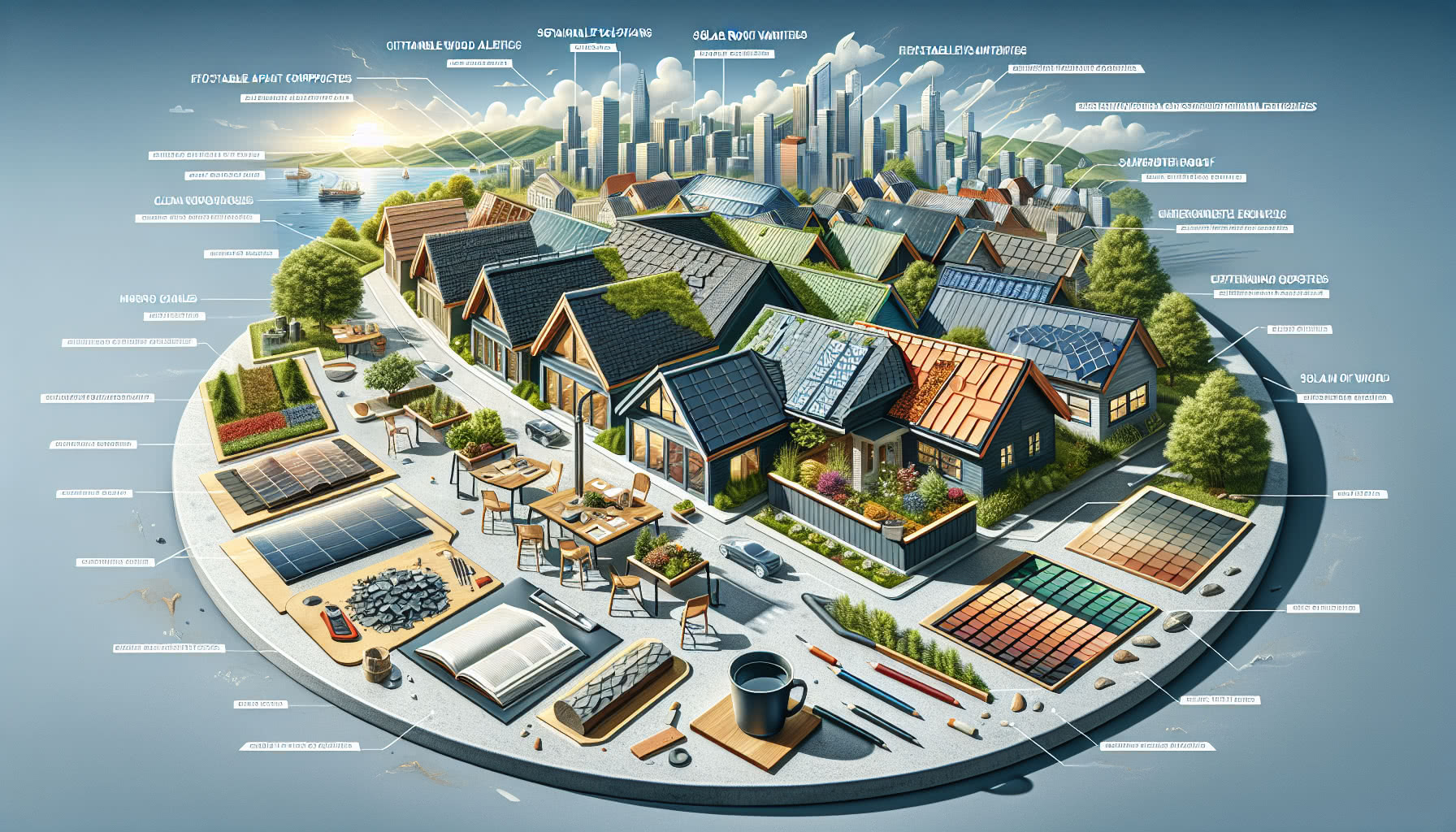
Costs vary by material, existing roof condition, roof complexity, and regional labor rates.
When planning for a new roof in 2025, homeowners must consider a variety of cost factors that can significantly affect the overall expense. The choice of materials plays a crucial role, with options ranging from advanced asphalt composites to premium slate or innovative solar shingles, each varying in price and performance characteristics. The condition of the existing roof also impacts costs; a roof that requires extensive repairs or a complete tear-off before installation of a new one will drive up expenses.
Additionally, the complexity of the roof design influences the final cost. More intricate designs with features like multiple dormers, valleys, or integrated solar panels necessitate more labor and materials, thereby increasing the cost. For instance, a simple gable roof might be on the lower end of the cost spectrum, while a complex, multi-level roof with skylights and green technology features will be more expensive to install.
Regional labor rates further dictate the overall cost of roofing projects. Labor costs can vary widely across different areas, influenced by local economic conditions, the availability of skilled contractors, and regional demand for roofing services. For example, roofing installation in urban areas or regions with high living costs might be higher compared to more rural or lower-cost areas.
Each of these factors—material choice, existing roof condition, design complexity, and regional labor rates—must be carefully evaluated to effectively plan and budget
Simple gable roofs remain cost-effective; complex designs with dormers, skylights, or solar integration increase expenses.
Picking the right roof for your home in 2025 is all about finding the sweet spot between looks, how it works, and what it costs. If you’re looking to save money, a simple gable roof (the classic triangle shape) is still a great choice. It’s easy to build, uses less material, and keeps labor costs down.
Now, if you want to add some flair with dormers, skylights, or even solar shingles, be prepared to spend a bit more. These features can really brighten up your home and save you energy, but they also require extra work and know-how. For example, skylights need to be installed carefully to avoid leaks, and dormers involve changing the roof’s structure.
Speaking of solar shingles, they’re becoming super popular! They’re a fantastic way to generate your own electricity, but they do cost more upfront than traditional roofing. However, you’ll likely save a lot on energy bills in the long run, and you might even get tax breaks.
Basically, while customizing your roof with cool features is tempting, it’s important to think about how much it will cost you now and how much you’ll save later. It’s all about finding the balance that works best for your home and your budget
2025 Average Costs (per square):
As the roofing industry evolves, so too does the cost of materials, crucial for homeowners planning a roof replacement in 2025. A breakdown of average costs per square (100 square feet) reveals a range reflective of both material quality and longevity.
| Roofing Material | 2025 Average Cost (per square) |
|---|---|
| Asphalt | $100-$200 |
| Metal | $200-$400 |
| Wood | $250-$400 |
| Tile/Cement | $400-$600 |
| Slate | $800-$1,200 |
| Solar Shingles | $1,000-$1,500 |
- Wood roofing, which includes sustainable options like cedar and redwood. These materials not only offer an aesthetic appeal but are now treated to better resist fire and pests.
- Tile and cement roofs, preferred in warmer climates for their longevity and heavy-duty nature.
- Slate roofing remains a premium option and are recognized for drastically enhancing a home’s resale value due to its sophisticated appearance and longevity.
- Solar Shingles although priced at a premium can offset this initial cost.
They reduce long-term energy bills and increase energy independence. The cost of Solar Shingles reflect the advanced technology and dual functionality, providing both protection and power.
Choosing the Best Roof for Your Home
Okay, so you’ve got a handle on how much different roofs cost. Now, how do you pick the right one for your home? It’s about finding that perfect balance between looks and how well it works. When you’re thinking about replacing or upgrading your roof, don’t just focus on the price tag. Think long-term!
For example, metal roofs are super durable and can save you money on energy, but they might be pricey upfront. And while slate roofs are gorgeous and tough, they’re heavy and require a strong structure, which could mean extra costs.
If you live in an area with crazy weather, you might want to consider advanced asphalt shingles or solar shingles. They’ll protect your home and help you save on energy bills. Plus, they’re a great way to be eco-friendly, which is a big deal for many homeowners these days.
Most importantly, talk to a good, experienced contractor! They know all about local weather, building codes, and what roof styles work best for your area. They’ll help you choose a roof that not only looks great but also fits your home’s needs and your lifestyle.
Getting expert advice will make sure your roof installation goes smoothly.
Assess home structure, roof slope, climate, and energy goals; consult a contractor for tailored quotes.
First, let’s talk about your home’s structure, especially the slope of your roof. Different roofing materials work best on different slopes. For example, metal roofs are great for steep roofs because they’re strong and shed water and snow easily. Tile roofs, on the other hand, are often better for flatter roofs, especially in warm areas. And don’t forget about your local weather! If you get a lot of snow or wind, you’ll want tough materials like slate or strong metal alloys.
Want to save on energy bills? Choosing the right roof can make a big difference. If you live in a sunny area, consider solar shingles or reflective metal roofs. These options can really cut down your energy costs and help you go green in 2025 and beyond.
To make sure you pick the perfect roof, it’s a good idea to chat with a roofing contractor. They can give you a personalized quote that considers your home’s structure, your local climate, and your energy goals. They’ll also help you make sure your new roof meets local building codes and helps you qualify for energy-saving certifications. This will not only make your home more comfortable but also increase its value
Asphalt: Affordable, recyclable options available; advanced laminated shingles now last 30+ years.
Looking for a roof that’s budget-friendly and lasts a long time? Asphalt shingles are a great choice! Especially the newer laminated types, which can easily last over 30 years and look fantastic, even like expensive slate or wood, but for much less.
Good news for the planet too! By 2025, you’ll find more and more recyclable asphalt shingles. This means your old roof can be turned into something new, cutting down on landfill waste. Plus, many of these shingles are now made with up to 75% recycled materials, so you’re helping the environment without sacrificing quality or strength.
You get the best of both worlds: a durable, attractive roof that’s easy on your wallet and kind to the Earth. With affordable prices and a focus on sustainability, asphalt shingles are a smart pick for your new roof in 2025.”
Metal: Highly durable, reflective, and recyclable; often installed over existing roofs
Metal roofing is quickly becoming a favorite among homeowners! It’s super tough, easily lasting 50 to 70 years, and can handle even the harshest weather. Plus, it reflects sunlight, keeping your home cooler in the summer and saving you money on air conditioning. And because it’s recyclable, you’re helping the environment too!
Here’s another great perk: you can often install a metal roof right over your old one! This saves you time, money, and reduces waste. Plus, with the latest underlayments available in 2025, you’ll get even better insulation, potentially cutting your energy costs by up to 20%.
Whether you live in a hot or cold climate, metal roofs are a fantastic choice. They’re strong, look great, and help you save money and protect the planet. It’s a smart, long-term investment for your home!
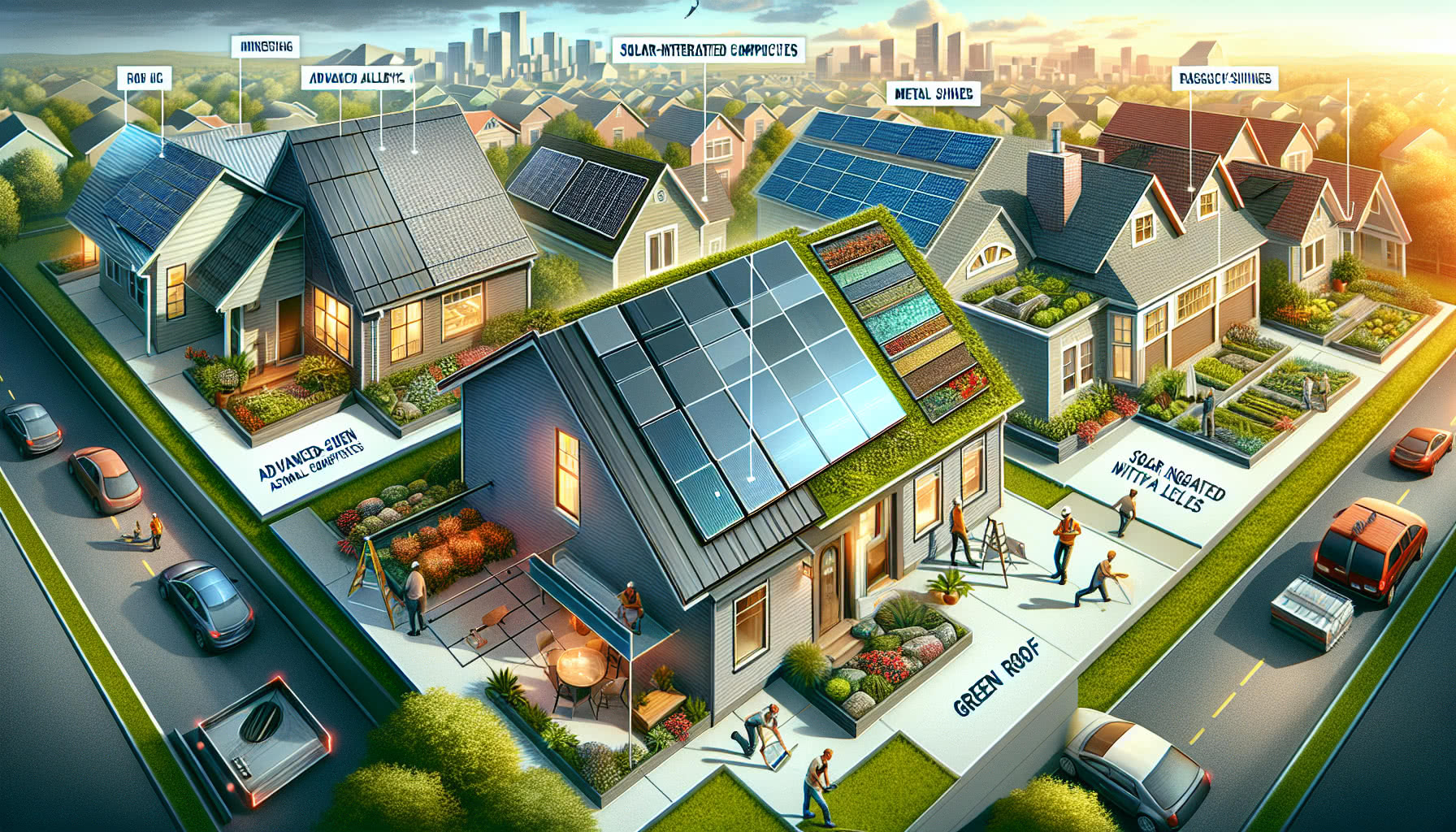
Wood: Sustainable cedar and redwood options; treated varieties resist fire and pests, lasting 30-40 years.
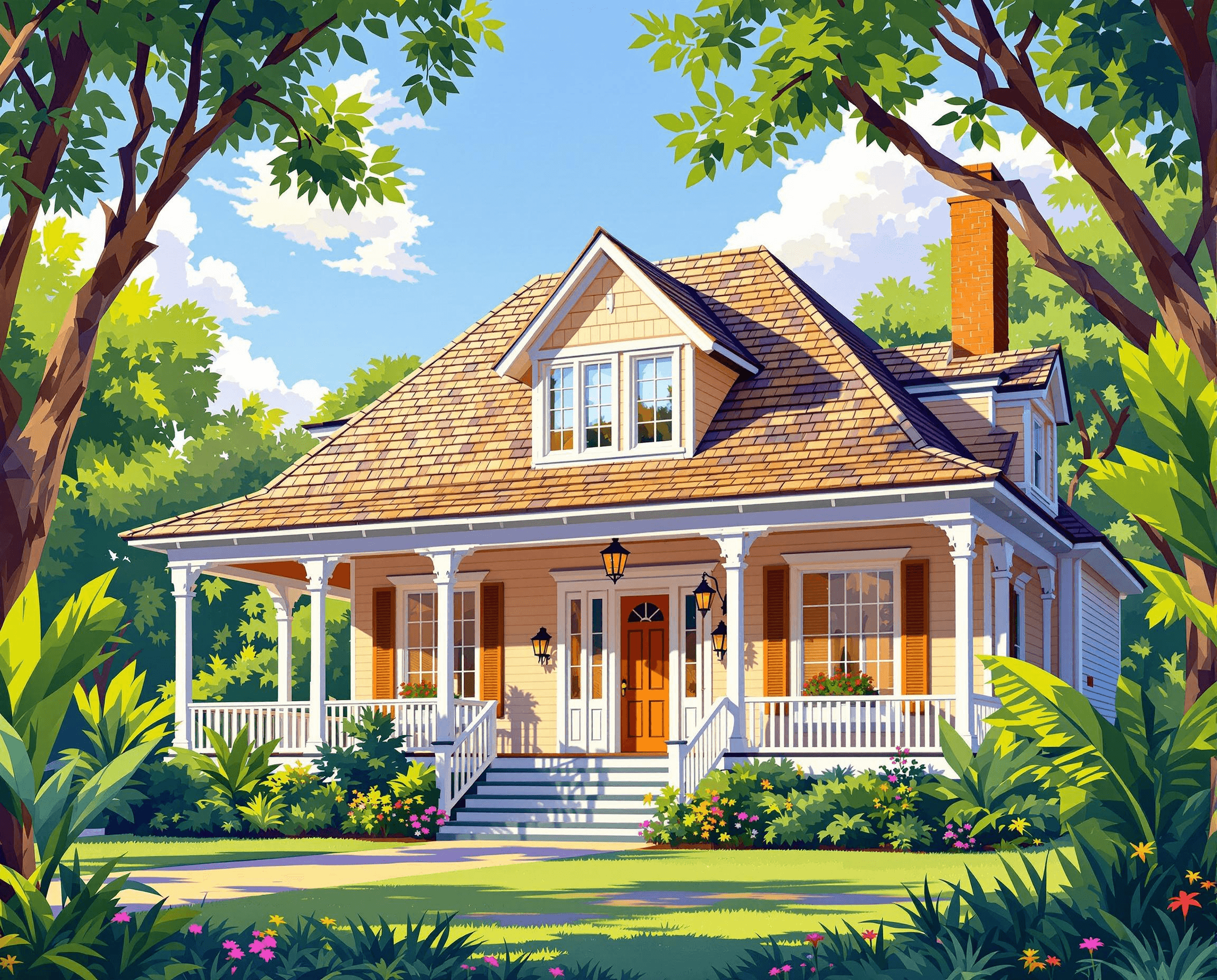
Cedar and redwood roofs are a beautiful and eco-friendly option! These woods are harvested from well-managed forests and treated to resist fire and pests, making them a safe and long-lasting choice. You can expect them to last between 30 and 40 years, which is a great investment for your home.
Cedar and redwood roofs add a warm, natural touch to any house, whether you have a cozy cabin or a modern home. They’re especially popular in areas where people want their homes to blend in with nature. Plus, with the special treatments they receive, they handle moisture really well, so you won’t have to worry about warping or shrinking.
These premium wood roofs cost between $650 and $850 per square. While they’re a bit pricier, you’re getting a stunning, durable roof that will boost your home’s curb appeal and last for decades with proper care.
What innovative materials are set to redefine roofing technology by 2025?
>>>>>>
By 2025, the roofing industry is poised to embrace a range of innovative materials that offer enhanced durability, energy efficiency, and environmental sustainability. One of the most promising developments is the increased use of solar reflective tiles that significantly reduce heat absorption, helping to lower cooling costs and energy consumption in homes. Additionally, there is a growing trend towards the use of recycled materials in roofing products, such as rubber roofs made from recycled tires, and shingles crafted from reclaimed plastics and wood fiber. These advancements not only contribute to a greener planet but also offer superior weather resistance and longevity, promising a revolution in roofing that combines ecological responsibility with economic efficiency.
Tile and Cement: Heavy but durable; popular in warm climates; lifespan 50-100 years with proper care.
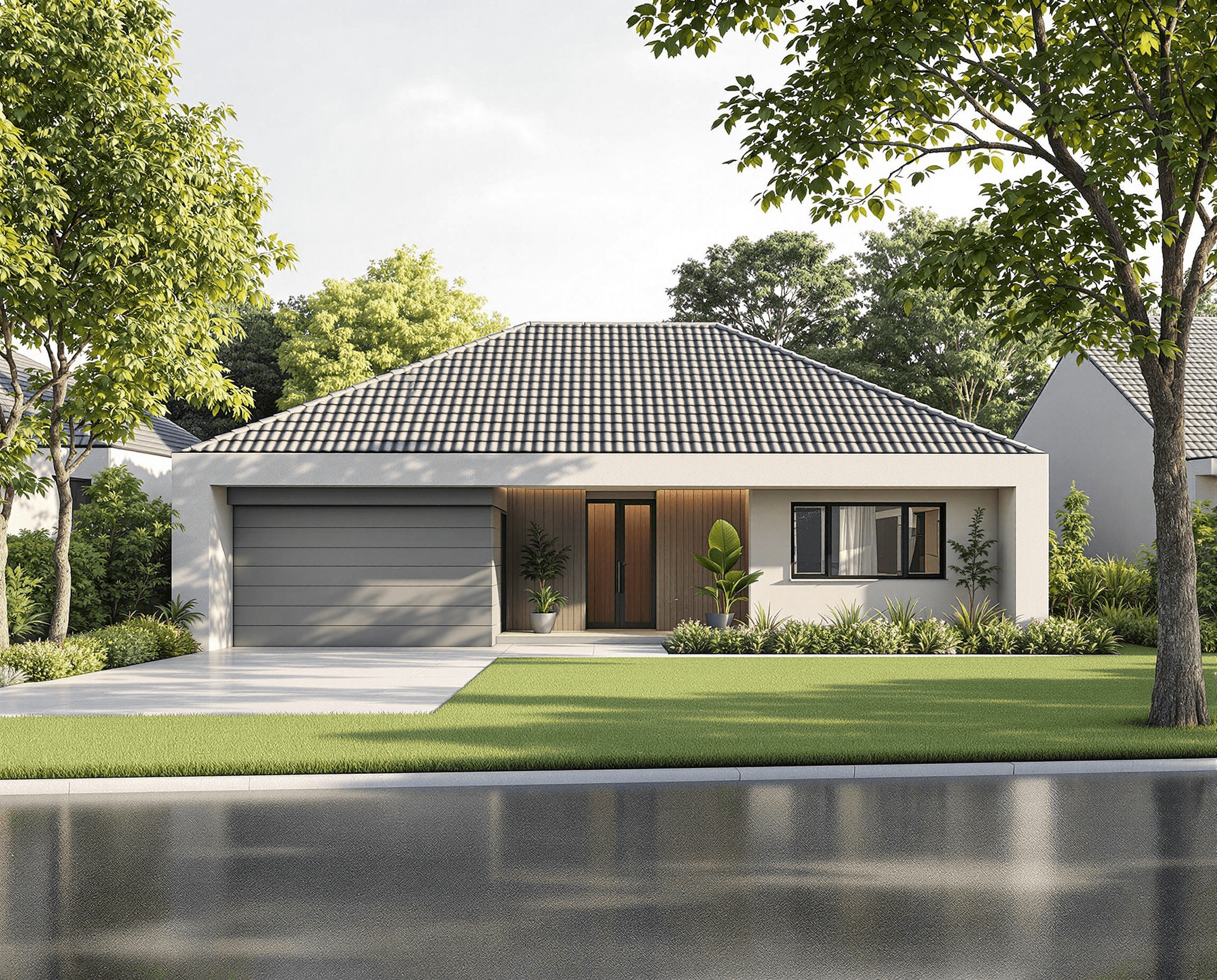
If you live in a warm climate and want a roof that lasts practically forever, tile or cement roofing is a fantastic option! These roofs are incredibly tough and can handle anything Mother Nature throws their way, from strong winds to heavy rain. With proper care, a tile roof (made from clay or concrete) can easily last 50 to 100 years! Just keep it clean and replace any broken tiles to keep it in top shape.
Now, because these roofs are heavy, your home needs a strong structure to support them. You’ll want to check your foundation and framing before installing one, which might add to the initial cost. But here’s the good news: you’ll save money in the long run because these roofs rarely need repairs, and they help keep your home cool in the summer, lowering your energy bills.
Even though making tile and cement roofs uses a bit more energy upfront, their long lifespan and energy-saving properties make them an eco-friendly choice. They’re a great way to invest in a durable, sustainable roof that will keep your home comfortable for generations
Slate: Premium choice, boosts resale value, lifespan 100+ years; costs start at $800 per square.
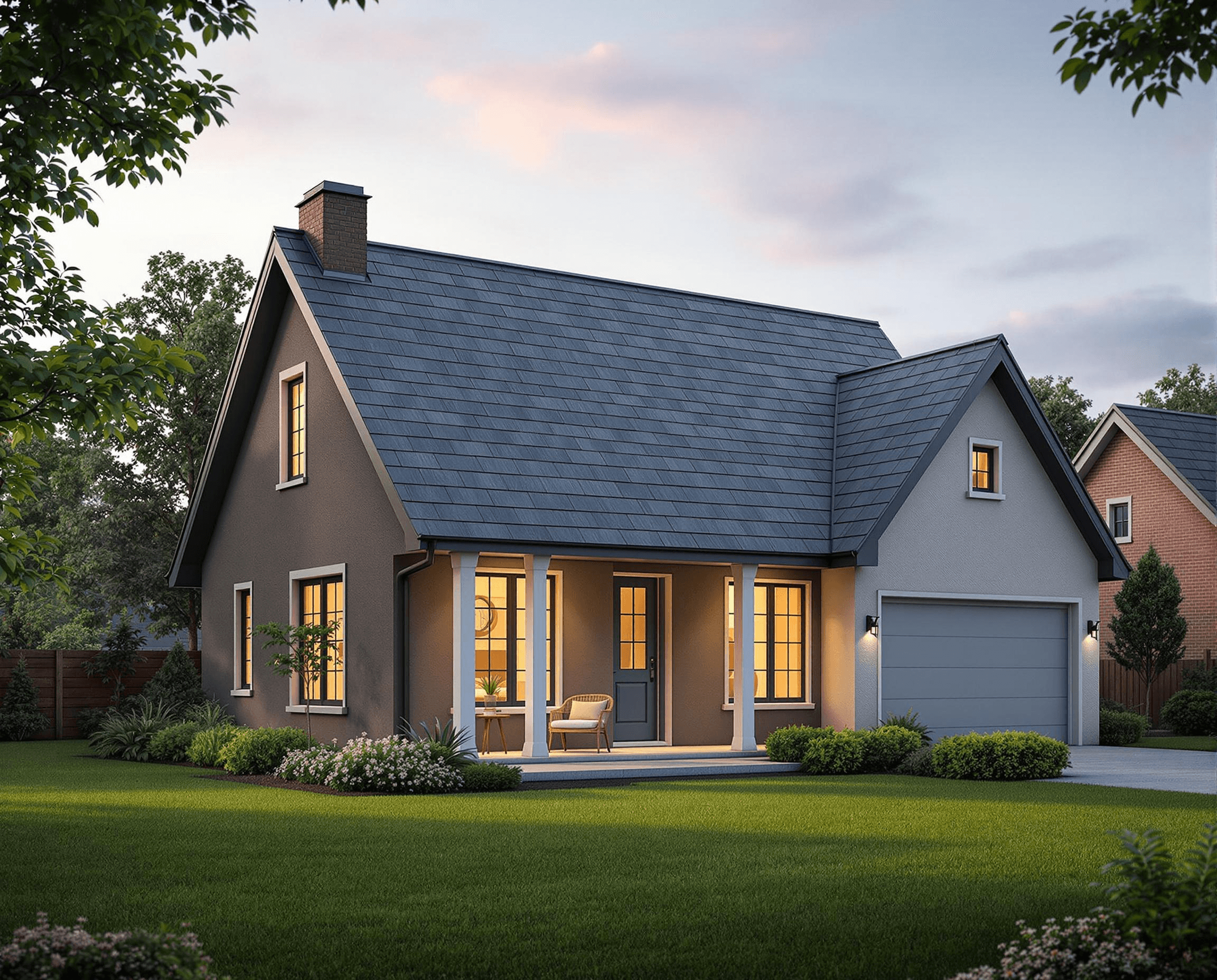
Slate roofing is a premium choice! It’s incredibly beautiful and can easily last over 100 years, making it a fantastic long-term investment for your home. Yes, it starts at around $800 per square, which is a significant upfront cost. But here’s the kicker: it can boost your home’s value by 10-15% in high-end areas, which is a major plus if you’re in a premium neighborhood.
And the best part? Slate is super low-maintenance. You only need to have it checked every 5-10 years, and repairs are rare. Plus, because it lasts so long, it creates very little waste, making it an eco-friendly choice. As more people look for sustainable and durable building materials, slate roofing is becoming even more popular. It’s a great way to invest in a roof that’s not only beautiful and long-lasting but also good for the environment and your wallet in the long run.”
Solar Shingles: Emerging favorite; generate electricity, offset energy bills, lifespan 25-40 years.

Solar shingles are a game-changer! These cool shingles look just like regular roofing but also work as solar panels, turning sunlight into electricity. This means you can save big on your energy bills and even boost your home’s value! Plus, they last a good long time, usually 25 to 40 years.
Unlike bulky solar panels, solar shingles are light and blend right into your roof, so your home looks great. Installation is getting easier and cheaper too! By 2025, you can expect to pay between $21,000 and $25,000 for a full installation, which is a nice drop in price thanks to better manufacturing.
If you live in a sunny area, solar shingles are a fantastic investment. You can generate enough power to run your whole house, and sometimes even have extra to sell back to your local power company! It’s a smart way to go green, save money, and make your home more energy-efficient
Planning for a New Roof; things to consider
After evaluating the cost implications and selecting the ideal roofing material, the next pivotal step involves meticulous planning for a new roof. This stage is crucial, especially with the anticipated roofing industry advancements by 2025, which emphasize sustainability, energy efficiency, and the integration of smart technology. Homeowners should consider the environmental impact and maintenance requirements of their chosen materials, as these factors will influence long-term satisfaction and functionality.
Additionally, understanding local regulations and securing the necessary permits are essential to ensure compliance with building codes, especially for those considering solar installations or eco-friendly roofing solutions. Engaging with experienced professionals who are well-versed in the latest roofing innovations and local building laws can streamline this process, ensuring that the roofing project aligns not only with personal preferences but also with community standards.
This careful preparation will set the foundation for the subsequent sections, which get deeper into the specifics of installation and long-term roof management, ensuring that homeowners can make the most informed decisions for a durable and efficient roof.
Focus on 2025 trends: energy efficiency, sustainability, and smart roofing (e.g., sensors for leak detection).
As we approach 2025, the roofing industry is not just about covering homes but also enhancing them through innovative technologies and sustainable practices. A significant trend is the rise of smart roofing systems equipped with sensors for leak detection. These advanced sensors can promptly notify homeowners of even the smallest breaches, which can prevent costly water damage and mold issues. This technology aligns seamlessly with the growing demand for homes that are not only energy-efficient but also intelligent and responsive to environmental changes.
Moreover, sustainability continues to steer roofing materials towards greener horizons. The integration of solar shingles is becoming increasingly popular, combining traditional roofing materials with photovoltaic technology to generate electricity. This dual-functionality not only helps in reducing utility bills but also supports a sustainable living approach by harnessing renewable energy directly from the sun.
Reflecting on these evolving trends, it becomes clear that the future of roofing is geared towards creating more energy-efficient, sustainable, and technologically integrated homes. These advancements promise not only to enhance the functionality of roofs but also to contribute positively to environmental conservation, making them a smart choice for any new roofing project in 2025.
What groundbreaking material is set to redefine roofing efficiency in 2025?
In 2025, the roofing industry is set to be revolutionized by the introduction of advanced solar reflective tiles. These innovative tiles are designed not only to reflect sunlight and reduce heat absorption significantly but also to integrate seamlessly with smart home systems, allowing homeowners to monitor and adjust their energy usage in real-time. This leap in roofing technology not only promises substantial cost savings on energy bills but also contributes to a more sustainable living environment.
Hire experienced professionals, verify certifications for solar or green roof installations.
When embarking on innovative roofing projects like solar shingles or green roofs, selecting seasoned professionals with the right credentials becomes paramount. With the surge in eco-friendly roofing options, such as the integration of solar panels or vegetative systems, homeowners must ensure that the contractors hired are not only experienced but also carry specific certifications relevant to these advanced installations.
For solar roofing installations, a certified PV (photovoltaic) installer is crucial. These professionals are trained specifically in the setup and maintenance of solar panels, ensuring optimal energy efficiency and safety. Similarly, for green roofs, which involve complex systems of waterproofing, drainage, and plant care, it’s advisable to engage a contractor with a green roof professional (GRP) certification. These certifications indicate that the professional has a proven knowledge base in handling the specific challenges presented by these sustainable roofing systems.
Moreover, due to the technical nature and regulatory requirements of these installations, these certifications also help in navigating local building codes and permit processes effectively. Ensuring that your roofing contractor has the appropriate credentials not only aids in achieving the desired energy efficiency and sustainability goals but also guarantees a higher standard of installation quality that aligns with the latest industry standards set for 2025.
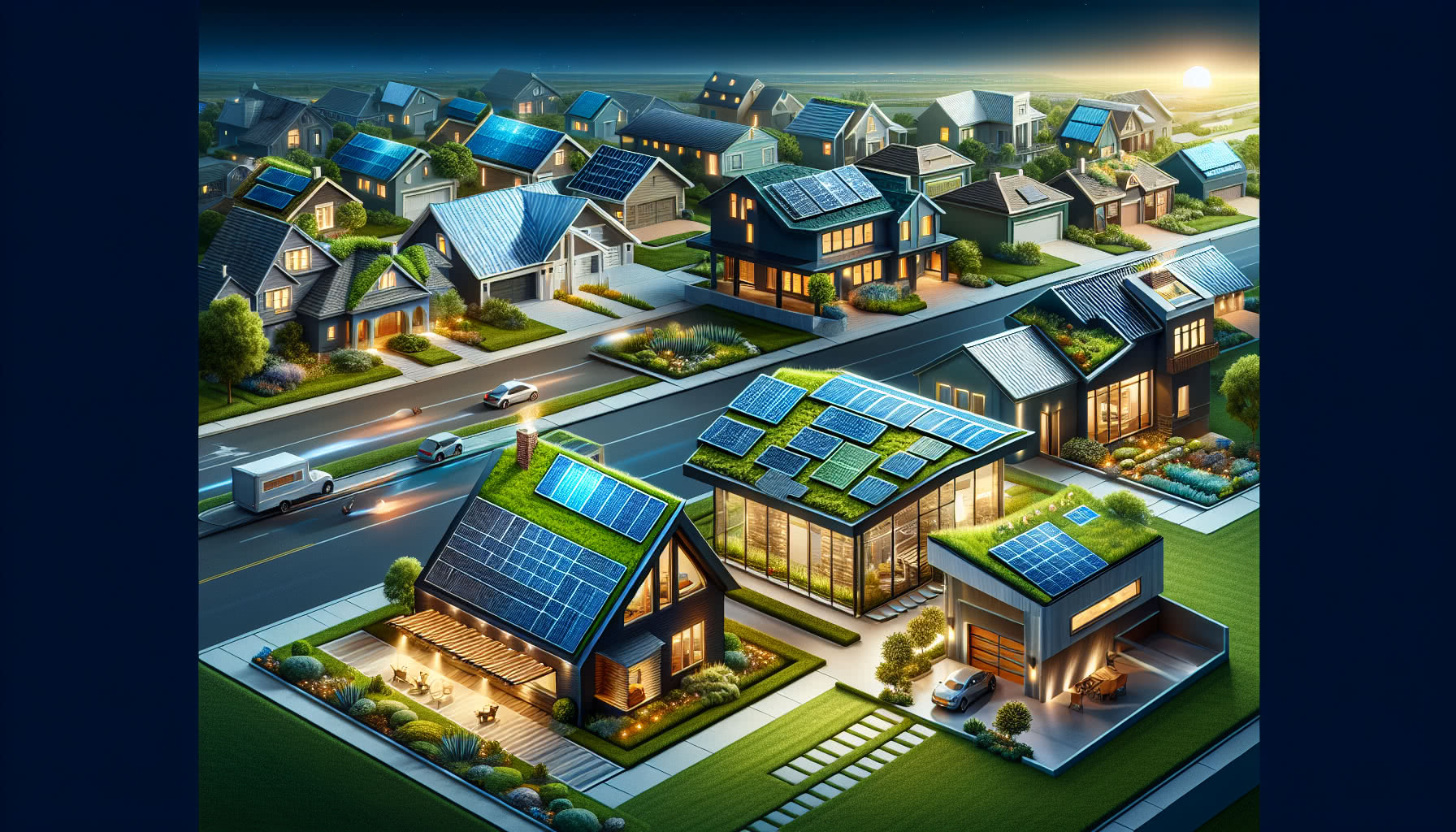
Check local regulations and permits, especially for solar or eco-friendly upgrades.
Ready to upgrade your roof, especially with solar or eco-friendly options? Great! But before you start, it’s super important to check with your local city or county about rules and permits. Every area has its own regulations for building and renovations, including roofing. For example, if you’re installing solar panels, you’ll likely need extra permits and inspections to make sure everything meets electrical codes and your utility company’s rules.
If you live in a neighborhood with a homeowner’s association (HOA), they might have rules about what your roof can look like or what materials you can use. This is especially important if you’re thinking about a green roof or using recycled materials.
It’s also a good idea to check your local zoning laws. These laws will tell you if certain roofing upgrades are allowed in your area.
For example, if you live in Central Louisiana, just give your local building department a call. They can tell you exactly what permits you need and if there are any specific rules you need to follow. Taking this step will prevent any legal headaches or delays down the road. As we move into 2025, with more focus on eco-friendly and energy-saving roofs, making sure you have all the right permits is a must!
Conclusion
As 2025 nears, the roofing industry is embracing a pivotal transformation, characterized by a significant shift toward sustainable and energy-efficient materials. From advanced asphalt composites to solar-integrated shingles, homeowners have a abundance of options that not only cater to aesthetic preferences but also align with environmental responsibilities. The introduction of lightweight, recyclable composites and the rising popularity of green roofs reflect a broader industry trend toward sustainability, driven by eco-conscious consumers and escalating energy costs.
Understanding the nuances of roofing, such as the updated “roofing squares” measurements and the specific costs associated with different materials—from cost-effective asphalt to premium slate and innovative solar options—is essential for making informed decisions. Whether the choice is a simple gable roof or a more complex design featuring dormers and skylights, the impact on both expenses and environmental footprint is considerable.
Looking ahead, planning for a new roof in 2025
Frequently Asked Questions

What are the major trends expected in the roofing industry by 2025?
- The roofing industry is set to experience significant changes in 2025. With the integration of green roofing, advanced solar technology, and increased use of sustainable materials.
- How will green roofing impact the industry by 2025?
- Green roofing will bring environmental benefits, such as reducing building heating and cooling costs. It will also enhance stormwater management, and improving air quality.
What advancements in solar technology are anticipated in the roofing sector?
- Expect to see more efficient, aesthetically pleasing solar tiles that blend seamlessly with traditional roofing materials. As well as enhancements in solar energy storage capabilities.
Are there any new materials expected to become popular for roofing by 2025?
- Sustainable materials like recycled shingles and cool roofing options are gaining popularity due to their environmental benefits and energy efficiency.
What cost changes are anticipated in the roofing industry?
- With the adoption of new technologies and materials, initial costs may rise; however, the long-term savings from energy efficiency and durability could offset these initial expenses.
- How should homeowners prepare for the upcoming changes in roofing?
- Homeowners should consider evaluating their current roofing systems and plan for upgrades to more sustainable and energy-efficient options.
- What is the expected impact of these roofing trends on professional roofers?
- Roofers will need to adapt by gaining knowledge in new materials and technologies to meet the growing demand for innovative and sustainable roofing solutions.
